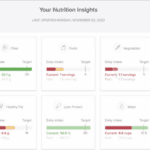Vital illustrates how the new wave of generative AI technologies can contribute to a better life for millions of people. Vital is using AI to take inscrutable test results and doctors’ notes, full of abbreviations and jargon, and produce meaningful explanations for patients in common English.
What about errors? According to Aaron Patzer, CEO, Vital’s doctor-to-patient medical note translator is more accurate on average than the summaries produced by doctors themselves. Plus, with Patzer’s background as Founder of Mint.com, he’s obsessed with making the user interface great for those that use Vital.
The doctor-to-patient medical note translator is part of a larger suite of products that deliver information to patients about their health care visits, such as what will happen during a procedure and instructions for follow-up. Patients can use Vital to order services in their rooms. Patzer summarizes the company’s goal as to “bring knowledge to you exactly when you need it.”
Currently, Vital is available to ER patients and hospital inpatients. They plan to expand into ambulatory and urgent care. In the more than 100 hospitals that use Vital, a large number of patients (60%) of patients take advantage of it. Plus, they’ve made their patient medical note translator available to try out for free on their website.
Watch the video for more background and how Vital is using generative AI to make health information more accessible for patients.
Learn more about Vital: https://vital.io/
Listen and subscribe to the Healthcare IT Today Interviews Podcast to hear all the latest insights from experts in healthcare IT.
And for an exclusive look at our top stories, subscribe to our newsletter.
Tell us what you think. Contact us here or on Twitter at @hcitoday. And if you’re interested in advertising with us, check out our various advertising packages and request our Media Kit.













